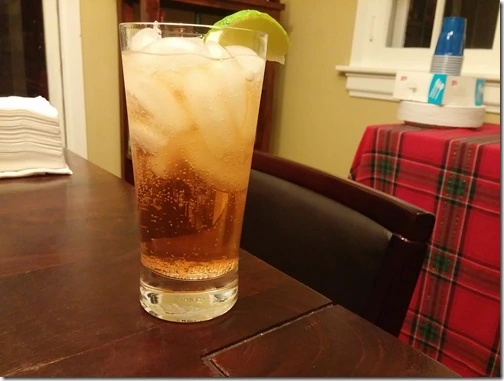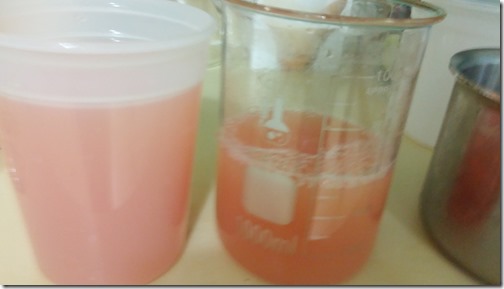I feel like I’m that guy who updates every 6 months and says “sorry I haven’t written in a long time because BLAH BLAH BLAH”. Let’s skip that and just forgive each other. You forgive me for not writing more. I forgive you for, well, you know what you did.
Anyway, the latest. In anticipation of a special pop-up cinco de mayo event I’m doing, I decided to try to play with some new things. It’s at a great little cocktail bar called Crafted Cocktail, that does pretty much what the name implies. I like the bar and the people who own/run it and it’s just before camper season starts to kick in, so it’s perfect timing. I’d like to do a few more popups in various places throughout the year.
I also want to introduce people on both sides of the bar to some of the batched stuff I do, and because it’s in an honest-to-goodness bar, not a tiny camper, I’ve got a bit of room to play with. And it’s Cinco de Mayo so I wanted to throw a little Latin flair in there. Yes, I realize Cinco de Mayo is specifically Mexican, not pan-Latin, but I can only cram so many margaritas down white people’s throats, so I’m expanding the parameters a little bit. On the scale of cultural appropriation it’s a minor offense, right?
One thing I’ve been looking for an excuse to play with is jello shots. I was telling my fiancee awhile back about this idea I had of doing real cocktails in jello form. She of course showed me this book she had bought years earlier called Jello Shot Test Kitchen. Apparently someone beat me to the punch by about five years.
I flipped through the book and it ain’t bad for $10. I wish it were better, honestly. It’s pretty much just classic cocktails with gelatin in them. Which isn’t a bad thing, but if I could sum the entire book up with “make a cocktail and add 1 packet of Knox per cup of liquid.” But man are the pictures pretty.
I got to thinking, if I’m going to do Cinco right, there are a few cocktails I have to have in at least one form. Michelada. Margarita. And, possibly my favorite, the Paloma.
The traditional Paloma is just tequila and grapefruit soda, and while a perfectly serviceable cocktail as it is (especially when I make the grapefruit soda) I like to do mine with a little Campari. So my usual recipe is clarified grapefruit, tequila, Campari, agave, and lime-acid, which I then force carbonate. It’s one of those drinks that’s like a symphony, where every ingredient coordinates with every other ingredient individually.
Combining the two thoughts, I had the idea to basically gel my standard Paloma recipe and then try to carbonate it. I suspected that it would carbonate the same way a piece of fruit does because really, if you think about it, a jello isn’t actually a solid. It’s liquid water held in a matrix by gelatin. I’m not sure if you can carbonate solid ice (but I now plan to find out) but I know you can carbonate liquid water in a solid item, like you do in fruit.
For phase one I was testing with good old Knox brand gelatin. The recommendation is to use one packet (roughly 7g) per cup, but I wanted my gel to come out a little firmer than normal. I want patrons to be able to pick it up rather than slurp it out of a shot glass. Also, it’ll have to stand up to the heat of a bar for long enough to serve, and with gelatin the firmer you make it, the more heat stable, to a point. It’s also got alcohol which I hace read can have an adverse affect on the gelling (though it sounds like it’s pretty slight until you hit 40%.) And finally, it’s carbonated, so I want it to trap the bubbles in. I felt like a slushier gel (think the cups of Jello you eat with a spoon) would be overall less effective. So I knocked it up to almost 10 grams.
The final recipe I went with was really, really close. It needed just a tad more sweetness. I don’t know if jelling/chilling took some away or what. But overall I was happy with the results, and will be upping the agave just a touch next time. Here’s what try #2 will be.
Carbonated Paloma Jellies 1.0
2 oz grapefruit juice
1 oz tequila
.5 oz Campari
.5 oz lime
.5 oz agave nectar
5g gelatin
Mix grapefruit juice, lime, and agave in a pan and sprinkle gelatin on top. Let bloom for a few minutes. Bring to near-boil and blend with immersion blender.
While it’s heating, spray unflavored cooking spray onto silicone molds. Then wipe away as much oil as you can with a paper towel. You’ll not see any on the final product but will get a good release that way. (Thanks to Jello Shot Test Kitchen for that tip!) I used these but you can use any shape you want, or just put it in a loaf pan and cut it later.
Stir hot jello mix into liquor ingredients. Pour into molds and place in fridge. I tried mine 4 hours later and they were already fully gelled.
If you want to carbonate, at home the easiest way is an ISI Whip. I just used one CO2 cartridge on mine, because I was afraid too much pressure might cause syneresis. I seem to remember in some of the earlier gelatin clarification experiments people were using chamber vacs and causing it at atmospheric pressure alone! (I realize the sucking of the vacuum first was probably a major contributor, not just the pressure after, but I didn’t want to risk it.)
After one night in the fridge it came out mildly carbonated. Not bad. Not where I wanted it to be, but the CO2 was clearly dissolving, so I felt like all I had to do was wait. After two and a half days, I tasted it in the morning and it had champagne-levels of CO2 in it! It carbonated much better than any liquid drink ever does. It exploded in your mouth like a Pop Rock.
This is only the first version, of course. I’m going to play around with a couple things next.
First I want to garnish with Campari Salt. That’s basically a 50/50 mix of dehydrated Campari and salt. It’s as amazing as it sounds. It’s simple to make too, you pretty much just spread Campari in silicone molds and pop it in a really low oven or dehydrator. It takes forever, but is very low effort. Them you mortar and pestle up the crystals that result.
Second, I want to try layering it. I’ll probably make a layer of lime/tequila gelatin, a layer of Campari/agave/grapefruit gelatin, and a layer of just grapefruit gelatin. I even want to try yellow grapefruit instead of red for the middle layer to see if I can get it close enough to white to resemble the Mexican Flag’s colors when fully assembled. I thought about using white food coloring, but it looks like it all has titanium dioxide in it.
I also have to figure out a way to do this for restaurant service. ISI whips probably can’t carbonate more than a handful at a time. I’ve got a top-secret device I’m working on for that. If it works, I should be able to carbonate large amounts of fruits, jello shots, etc. at once.
















